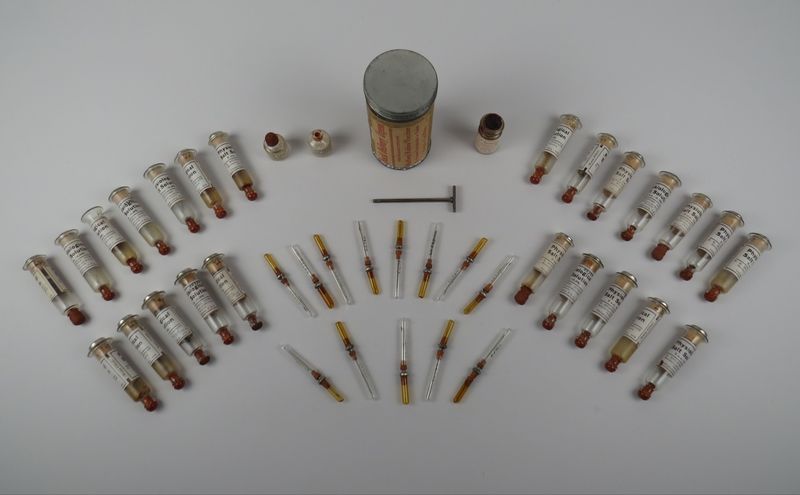The treatment consisted of 25 injections of rabies vaccine. 1604 Rabies reaches Paris causing panic.

In 19th Century Rabies Was Menacing Local News Pantagraph Com
A severely inflamed tongue and a frequent tendency to fight with other dogs.

How to treat rabies in the 1800's. Until Louis Pasteur and Emile Roux developed a vaccine in the mid-1880s bite marks from rabid or suspected rabid animals often were treated by cutting away the flesh in and around the infected area and then cauterizing the wound with lunar caustic fused silver nitrate. Madstones are calcified hairballs found in the stomachs of ruminants such as cows goats and deer. 1671 Superstitious practices for treating rabies are condemned by the Sorbonne.
In the 1800s the westward expansion. There is no cure for rabies and you must treat it very early. Rabies is very fatal and most people and animals die from it.
Three on the first day two on the second two on the third and one each day after for 18 days. Click to see full answer. Until Louis Pasteur and Emile Roux developed a vaccine in the mid-1880s bite marks from rabid or suspected rabid animals often were treated by.
The mad stone allegedly prevented rabies by drawing the poison out. Another practice thought to cure rabies originated in Europe and became popular in North America was the use of madstones or bezoar stones. If your pet has been vaccinated he or she will be quarantined for 10 days but treatment will not include re-vaccination.
The treatment consisted of 25 injections of rabies vaccine. Until Louis Pasteur and Emile Roux developed a vaccine in the mid-1880s bite marks from rabid or suspected rabid animals often were treated by. How to treat rabies in dogs in the 1800s.
1700 Rabies spreads through Europe during the 18th century. If you think your pet has been exposed to rabies or bitten by a rabid animal contact your veterinarian immediately. If your pet is unvaccinated and has contracted rabies he or she will be euthanized and the brain tissue submitted for analysis.
This 1885 image depicts one of Louis Pasteurs early rabies treatments. There was no medicine. These were gallstones or stones found in the stomachs of various animals formed from calcium deposits around a hair.
Mad stones were dark brown about 1 12 inches by 14 of an inch and had a rough texture. Mad stones were used to treat rabies in earlier times. Madstones are calcified hairballs found in the stomachs of ruminants such as cows goats and deer.
1703 The first case of rabies is reported in the Americas by a priest in Mexico. Besides rabies the mad stone also was used to treat snake bites bee stings spider bites other insect bites and toothaches. In the 1800s rabies appears to have been widespread in Europe especially France Germany and.
The most interesting cure for rabies involved the use of madstones in 18 th century America. Each dose was slightly stronger or more virulent than the preceding so that the body could build up immunity. It authorized any suspect dog to be killed provided that clinical signs of rabies had been observed in the animal ie.
Canine rabies spreads through Flanders North Belgium Austria Turkey and Hungary. Three on the first day two on the second two on the third and one each day after for 18 days. Each dose was slightly stronger or more virulent.
It is very possible. How do you treat dysentery in the 1800s on the. Photoprint of wood engraving in Harpers Weekly v29 Dec 1885836 originally pub.
How would you treat a rabies bite back in those days. Rabies has long been recognized throughout history which is most likely due to the particularly stark symptoms associated with the disease.

Surviving Rabies 100 Years Ago National Museum Of American History

Surviving Rabies 100 Years Ago National Museum Of American History

A History Of Rabies Since The Middle Ages Brewminate

A History Of Rabies Since The Middle Ages Brewminate

Ppt Rabies And The Aco Powerpoint Presentation Free Download Id 99692

Surviving Rabies 100 Years Ago National Museum Of American History

Surviving Rabies 100 Years Ago National Museum Of American History


0 comments:
Post a Comment